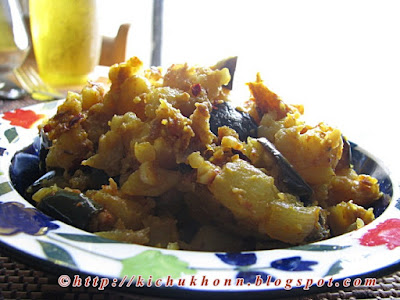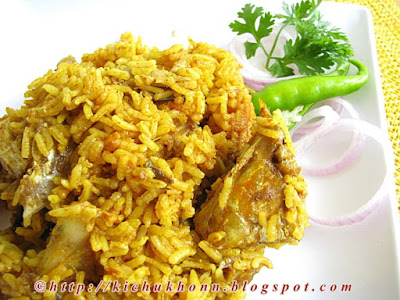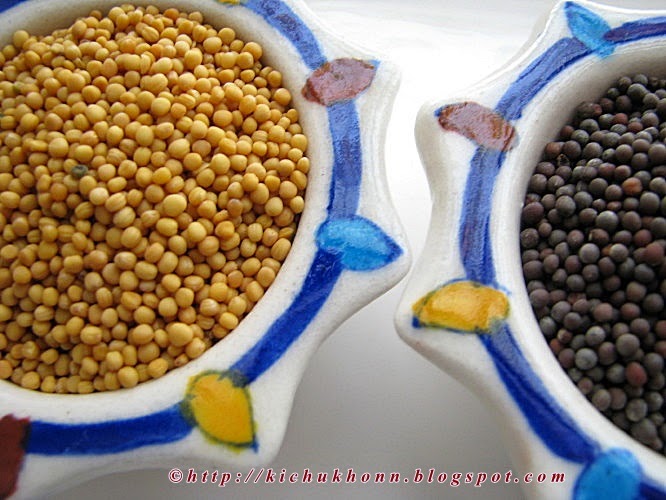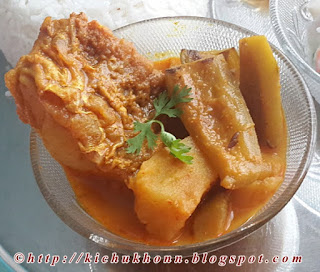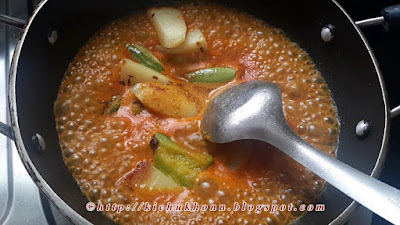After contemplating for four long years, we finally took the plunge.
After months of planning and running around, we finally allowed ourselves the indulgence of a renovation.
Of nothing much ... not life; not soul.
But of our kitchen.
That one place that is most dear to me. To the both of us.
We like to spend most of our time in our kitchen. Many of our happy discussions and serious decisions take place there .... with B sitting with his plate on the little swivel chair that I use, and I rolling out rotis and flipping one hot roti after another from the stove into his plate. Then we would switch places.
At times it would be dosas. At other times, the omelette.
Or a simple cup of tea.
At times it would be raining outside. Or it would be a cold, winter night.
For us, our little kitchen is our home.
I had been dreaming of a more streamlined, organised kitchen, for long.
Initially it was just a dream.
Later it became a necessity ... given my limited capabilities these days.
But unlike my real self, this was one project I was very afraid of taking up. Questions loomed large.
What if it does not turn out the way I want it to be?
What if I do not get the colours I want?
Not like; want.
What if the planners do not like my designs? Or plans?
And so on.
And to an extent, it turned out I was right all along.
Sitting down with obnoxious people, who do not know the ABC s of design and are absolute zeroes when it came to practicality, was a pain we endured for months.
Then came the part when I was denied the colours I wanted. Worse, I was suggested what colours I should be going for.
Needless to say, those guys got struck off from my list faster than you could blink.
And the final straw was when I was denied anything that made my kitchen practical to use and easy for me to work in.
I did not want a lavish, 'good looking, modular' kitchen. I wanted an 'easy to work in', practical kitchen.
But all the guys could do was not see that.
So after an agonising few months, B one day announced that we are going the wrong way all along.
Read ... approaching the wrong people.
What we should be doing is approach the right people who knew both civil work,plumbing,electric work as well as a good carpenter.
To me this sounded like asking for all the good places to see in the world at one place, together.
But I was wrong. And I have never been gladder for that.
B sought out the guy who had worked with the builders of this housing society. The man knew every brick, every wall and every electric wire ways and every other detail inside the skeleton of this flat.
More importantly, he knows what needs to be done and what is unnecessary.
He understood what I wanted in the kitchen.
For example I wanted the counter top to be able to be scrubbed with soap and water ... yes, I am old fashioned. But that is the only way I believe I can clean after I have cooked Ilish.
Or any other fish, for that matter.
None of the kitchen designers was ready to allow me that.
But this guy understood the necessity of a clean kitchen.
Hence, we have smoothly crossed that part.
Got a clean and practical design too.
Hopefully, all will go well.
Right now, as I type this, the workers are hammering the kitchen down.
The exhaust is running ... trying its best to blow out the dust.
And I am looking forward to trying out new places to eat for the next few days.
Wish me luck guys!
I am finally posting the simple Aloo Baingan ki sukhi sabzi that I had made for lunch along with the Saabut Masoor ki dal.
I make this sukhi sabzi very often ... mostly for dinner. I love dryish dishes slightly overdone ... a little on the mushier side. I find that the flavours blend together very well this way.
The onions and the brinjals add moisture ... so there is no need to add any water.
But if you still need to, you can sprinkle some.
And I almost always have a bottle of roasted and coarsely ground or crushed peanuts / groundnuts in my kitchen. While it comes handy whenever I am making the Sabudana Khichadi, I also use it to spike anything from a chutney to a simple, dry sabzi like this one.
Sprinkle a few teaspoonfuls and watch your sabzi going to another level altogether.
Need :
Aloo / Potatoes - 2, medium, peeled and cubed
Baingan / Brinjal - 1 medium, cubed
Pyaz / Onion - 1 medium, chopped into largish pieces
Moongfali / Peanuts - 5 tbsp, lightly roasted and crushed
Dhaniya / Coriander powder - 1 tbsp
Haldi / Turmeric powder - 1 tsp
Mirchi / Red chilli powder - 1 tsp
Jeera / Cumin seeds - ¼ tsp
Cooking oil - 1 tbsp
Salt - to taste
How to :
Heat oil in a heavy bottomed kadahi / wok.
Add the jeera. When it starts to splutter, add the onions.
Lightly fry them.
When they start to turn pink, raise heat and add the potatoes.
Stir fry them for a while. Add haldi and salt.
Cover and lower heat. Cook till they are half done.
Remove cover and add the brinjals.
Add the dhaniya powder and mirchi powder.
Stir and toss them well, bringing everything together.
Cover again and cook till everything is done.
Remove cover and add the peanut powder.
Raise heat and lightly stir and toss well till the peanut powder coats everything well and the whole thing is cooked well.
Cover, switch off heat and let it stand for five minutes.
Serve hot.
We love it with hot rotis.
Here is a look of the lunch plate that day.
 Enjoy!!
Enjoy!!
After months of planning and running around, we finally allowed ourselves the indulgence of a renovation.
Of nothing much ... not life; not soul.
But of our kitchen.
That one place that is most dear to me. To the both of us.
We like to spend most of our time in our kitchen. Many of our happy discussions and serious decisions take place there .... with B sitting with his plate on the little swivel chair that I use, and I rolling out rotis and flipping one hot roti after another from the stove into his plate. Then we would switch places.
At times it would be dosas. At other times, the omelette.
Or a simple cup of tea.
At times it would be raining outside. Or it would be a cold, winter night.
For us, our little kitchen is our home.
I had been dreaming of a more streamlined, organised kitchen, for long.
Initially it was just a dream.
Later it became a necessity ... given my limited capabilities these days.
But unlike my real self, this was one project I was very afraid of taking up. Questions loomed large.
What if it does not turn out the way I want it to be?
What if I do not get the colours I want?
Not like; want.
What if the planners do not like my designs? Or plans?
And so on.
And to an extent, it turned out I was right all along.
Sitting down with obnoxious people, who do not know the ABC s of design and are absolute zeroes when it came to practicality, was a pain we endured for months.
Then came the part when I was denied the colours I wanted. Worse, I was suggested what colours I should be going for.
Needless to say, those guys got struck off from my list faster than you could blink.
And the final straw was when I was denied anything that made my kitchen practical to use and easy for me to work in.
I did not want a lavish, 'good looking, modular' kitchen. I wanted an 'easy to work in', practical kitchen.
But all the guys could do was not see that.
So after an agonising few months, B one day announced that we are going the wrong way all along.
Read ... approaching the wrong people.
What we should be doing is approach the right people who knew both civil work,plumbing,electric work as well as a good carpenter.
To me this sounded like asking for all the good places to see in the world at one place, together.
But I was wrong. And I have never been gladder for that.
B sought out the guy who had worked with the builders of this housing society. The man knew every brick, every wall and every electric wire ways and every other detail inside the skeleton of this flat.
More importantly, he knows what needs to be done and what is unnecessary.
He understood what I wanted in the kitchen.
For example I wanted the counter top to be able to be scrubbed with soap and water ... yes, I am old fashioned. But that is the only way I believe I can clean after I have cooked Ilish.
Or any other fish, for that matter.
None of the kitchen designers was ready to allow me that.
But this guy understood the necessity of a clean kitchen.
Hence, we have smoothly crossed that part.
Got a clean and practical design too.
Hopefully, all will go well.
Right now, as I type this, the workers are hammering the kitchen down.
The exhaust is running ... trying its best to blow out the dust.
And I am looking forward to trying out new places to eat for the next few days.
Wish me luck guys!
I am finally posting the simple Aloo Baingan ki sukhi sabzi that I had made for lunch along with the Saabut Masoor ki dal.
I make this sukhi sabzi very often ... mostly for dinner. I love dryish dishes slightly overdone ... a little on the mushier side. I find that the flavours blend together very well this way.
The onions and the brinjals add moisture ... so there is no need to add any water.
But if you still need to, you can sprinkle some.
And I almost always have a bottle of roasted and coarsely ground or crushed peanuts / groundnuts in my kitchen. While it comes handy whenever I am making the Sabudana Khichadi, I also use it to spike anything from a chutney to a simple, dry sabzi like this one.
Sprinkle a few teaspoonfuls and watch your sabzi going to another level altogether.
Need :
Aloo / Potatoes - 2, medium, peeled and cubed
Baingan / Brinjal - 1 medium, cubed
Pyaz / Onion - 1 medium, chopped into largish pieces
Moongfali / Peanuts - 5 tbsp, lightly roasted and crushed
Dhaniya / Coriander powder - 1 tbsp
Haldi / Turmeric powder - 1 tsp
Mirchi / Red chilli powder - 1 tsp
Jeera / Cumin seeds - ¼ tsp
Cooking oil - 1 tbsp
Salt - to taste
How to :
Heat oil in a heavy bottomed kadahi / wok.
Add the jeera. When it starts to splutter, add the onions.
Lightly fry them.
When they start to turn pink, raise heat and add the potatoes.
Stir fry them for a while. Add haldi and salt.
Cover and lower heat. Cook till they are half done.
Remove cover and add the brinjals.
Add the dhaniya powder and mirchi powder.
Stir and toss them well, bringing everything together.
Cover again and cook till everything is done.
Remove cover and add the peanut powder.
Raise heat and lightly stir and toss well till the peanut powder coats everything well and the whole thing is cooked well.
Cover, switch off heat and let it stand for five minutes.
Serve hot.
We love it with hot rotis.
Here is a look of the lunch plate that day.




